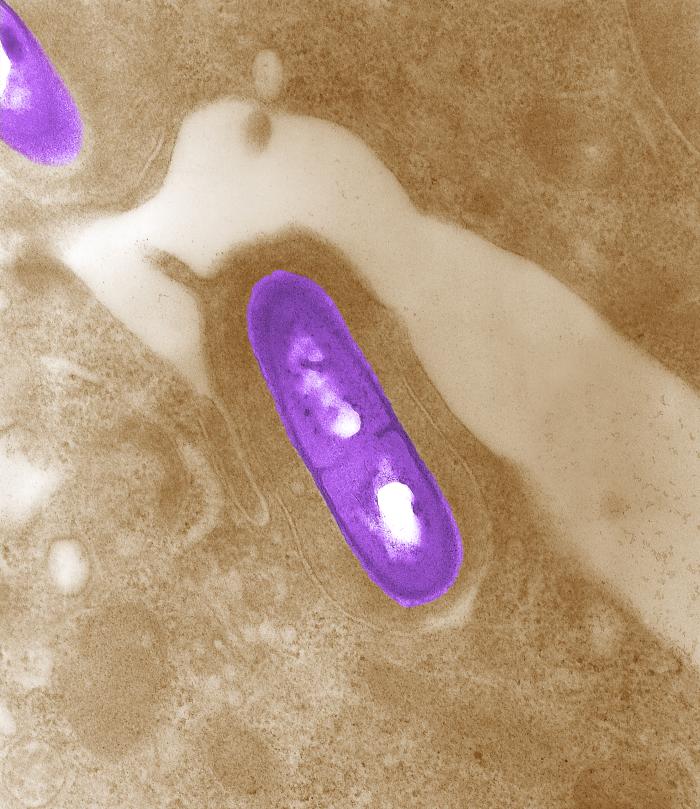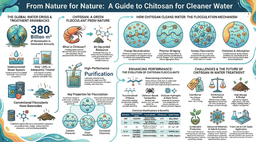Nature Fights Back: The Complex Evolution of Antibiotic Resistance in Soil
Published in Ecology & Evolution, Microbiology, and Genetics & Genomics

The battle against antibiotic-resistant microorganisms, often perceived as a struggle confined to hospitals, is actually a far-reaching conflict that extends into the very soil beneath our feet. Think of the soil as a bustling city, teeming with a diverse population of bacteria, all constantly interacting, competing, and evolving. Within this microbial metropolis, antibiotic resistance genes are like hidden blueprints, allowing certain bacteria to survive and thrive even when faced with the threat of antibiotics. Our recent study shines a light on this hidden world, focusing on the Listeria genus of bacteria that call the soil home.

Photo credit: Dr. Balasubramanian Swaminathan and
Peggy Hayes, Centers for Disease Control and Prevention.
Listeria is not just a bacterium vital for food safety; it is a common resident of the soil. Some Listeria species, like L. monocytogenes, are known to cause serious infections via food contamination, while others are less harmful. Using our national collection of soil-dwelling Listeria genomes across the contiguous United States (Liao et al., Nat Microbiol, 2021), we identified five primary genes that confer antibiotic resistance (lin, mprF, sul, fosX, and norB) that are predominant in Listeria. These genes are like specialized shields, each protecting bacteria from a specific type of antibiotic. The lin gene, for instance, provides resistance against lincomycin, while mprF protects against the antibiotics defensin, daptomycin, and gallidermin. These resistance genes were found primarily in Listeria sensu stricto species, which are more closely related to the pathogenic L. monocytogenes. The sensu lato species also carry these genes, but often in a truncated form, like a broken shield that no longer provides full protection.
How do Listeria acquire these resistance genes? Horizontal gene transfer is a possible mechanism, a process in which bacteria exchange genetic material directly—like swapping trading cards or copying and pasting open-source code into their genome—rather than inheriting genes from their parents. Our study pinpoints transformation as the main route for gene transfer in soil-dwelling Listeria. Here, the bacteria take up free-floating DNA from their surroundings, like a scavenger finding a useful tool on the ground. Interestingly, this process differs from what we often see in clinical and food environments, where the gene transfer is frequently mediated by mobile genetic elements like plasmids or transposons, the special delivery vehicles for genes. In soil, however, these genetic vehicles appear to play a less prominent role in spreading antibiotic resistance among Listeria, suggesting a distinct pathway for resistance evolution in soil ecosystems.
We discovered that the environment itself is not just a passive backdrop but an active player in the drama of antibiotic resistance. In soil-dwelling Listeria, the number of antibiotic resistance genes is strongly influenced by environmental factors, particularly soil properties. Elements like aluminum and magnesium take center stage, shaping how bacteria interact with and acquire resistance. Think of the soil as a dynamic stage, where its chemical composition sets the tone for the bacterial actors. For example, aluminum might boost the uptake of resistance genes, while magnesium appears to have the opposite effect, likely because it influences competition among bacterial species in magnesium-limited conditions. Land use also plays a critical role, with forests appearing to associate with a greater number of antibiotic resistance genes, possibly due to wildlife acting as carriers.
Human activities and land management practices further play a role in shaping the genetic diversity of Listeria resistance genes. Using machine learning, we demonstrated that complex environmental variables and their interactions impact the presence of resistance genes. This underscores the importance of considering environmental conditions and disturbances in the effort to address antibiotic resistance.
TL;DR
🧬 We identified five antibiotic resistance genes predominantly found in Listeria sensu stricto species, with species more closely related to L. monocytogenes, the causative agent of listeriosis, showing a greater number of antibiotic resistance genes.
🔄 We found evidence of horizontal gene transfer of antibiotic resistance genes both within and between species, likely mediated by transformation as opposed to conjugation and transduction.
🌱 We also found that environmental variables play a vital role in the evolution of antibiotic resistance genes, with soil properties (like aluminum and magnesium) affecting the number of antibiotic resistance genes and land use, especially forest coverage in surrounding area, affecting the genetic diversity of these resistance genes .
Our study highlights the impact of environmental changes on the dynamics of antibiotic resistance. The spread of antibiotic resistance is not confined to hospitals; it is an environmental issue with far-reaching effects on the soil's microbial community and potentially on human health. The environment plays a significant role in the broader fight against antibiotic resistance, with factors like soil properties and land use influencing the evolution of these genes. To truly understand and address the challenge of antibiotic resistance, a more holistic approach is necessary. By recognizing and addressing the environmental factors at play, significant strides can be made in combating this global threat.
Reference
Liao, J., Guo, X., Weller, D.L. et al. Nationwide genomic atlas of soil-dwelling Listeria reveals effects of selection and population ecology on pangenome evolution. Nat Microbiol 6, 1021–1030 (2021). https://doi.org/10.1038/s41564-021-00935-7
Acknowledgement
We would like to thank Carrie Kroehler from the Center for Communicating Science at Virginia Tech for her helpful comments and suggestions to improve this article.
Follow the Topic
-
Nature Communications

An open access, multidisciplinary journal dedicated to publishing high-quality research in all areas of the biological, health, physical, chemical and Earth sciences.
Related Collections
With Collections, you can get published faster and increase your visibility.
Women's Health
Publishing Model: Hybrid
Deadline: Ongoing
Advances in neurodegenerative diseases
Publishing Model: Hybrid
Deadline: Dec 24, 2025




Please sign in or register for FREE
If you are a registered user on Research Communities by Springer Nature, please sign in